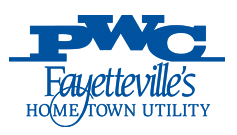Residential EV Charging
Over 80% of EV charging happens at home. Whether you are a homeowner or live in multifamily housing, there are different ways you can charge your EV to fit your daily driving needs.
If you are considering charging your EV at home, PWC offers an optional Whole Home rate that features a super Off-Peak rate daily from 9:00pm-5:00am. Customers who sign up for the rate, pay a higher basic facility charge and on-peak rate and their super Off-Peak rate is 44% lower than Off Peak rates. The rate may be the most beneficial to Electric Vehicle owners who can charge their vehicle at home and drive at least 16 miles a day/480 miles a month. You can see which rate may benefit you by using our EV Rate Calculator and call 910-483-1382 to speak with a PWC representative to request to participate in our Whole Home electric rate if you’d like to opt in.
Level 1 (L1)
- Uses a common household plug on a 120-Volt, 20 Amp circuit. Most EVs should come with an adapter to plug into this type of outlet.
- Charges at a slow rate at approximately 3-5 miles of range per hour.
- Convenient for overnight charging and those with low daily range requirements.
Level 2 (L2)
- Uses an installed outlet on a 208-240 Volt, 40 Amp circuit. Owners may need to purchase adapter to plug into NEMA-1450 outlet.
- Charges 10 times faster than Level 1 charging and typically adds 20-30 miles of range per hour.
- Can be installed at home or workplace and typically takes 4-8 hours to fully charge the car depending on charger output. The higher the kilowatt (kW) output from the charger, the faster the battery will recharge.
- Recommended for owners with high daily driving requirements over 100 miles.
Level 3 (L3)
- Uses a 480-Volt circuit and is commonly referred to as DCFAST or DCFC.
- Charges at the fastest rate; most long-range EVs can achieve 80-100% charge in 20-60 minutes depending on charger output. The higher the kilowatt (kW) output from the charger, the faster the battery will recharge.
- Mostly found at public locations and along high traffic routes.
- Not recommended for residential charging. Installation and upgrades required to support charging are costly.
Installing home-electrification upgrades, like home electric vehicle (EV) charging stations, can help homeowners save significantly on their energy costs, and thanks to the landmark Inflation Reduction Act (IRA) of 2022, undertaking these home improvements comes with more incentives than ever.
But before you summon a licensed electrician to your home, there are a few simple steps you can take on your own to assess your home’s readiness for EV-charging upgrades. These can help you roughly anticipate costs without shelling out cash for an official estimate.
1. Understand the differences between Level 1 and Level 2 chargers.
Every EV on the market today comes with a basic 120V charging cable, known as a Level 1 charger. This allows you to connect to any standard electrical outlet in your home and start charging your vehicle immediately.
2. Think about your home’s physical layout.
Most EV owners opt to upgrade to Level 2 charging capabilities at home but not all homes have the ideal physical layout.
3. Assess your home’s electrical setup.
Physical layout aside, your home’s existing electrical system can be a determining factor in EV upgrade readiness. After all, as mentioned in connection with Level 1 chargers, charging an EV can potentially max out load capabilities.
For more details about how to answer these three questions, click here. You can also contact ev@faypwc.com to ensure there is sufficient electrical capacity at the service location for safe and reliable service.
Incentives
There are different incentives and cost savings depending on the type of EV you own:
- Federal Plug-In Electric Vehicle (PEV) Tax Credit– Individuals who purchase a new plug-in or fully electric vehicle may qualify for a one-time credit on their federal taxes. To learn more, visit the Department of Energy’s Law and Incentive site.
- Level 2 Multi-Unit Dwelling Program– $489,544 in Volkswagen funds are available for Property owners of multi-unit dwellings with 10 or more units in North Carolina. The applications are currently open and will close when the funds are exhausted.









